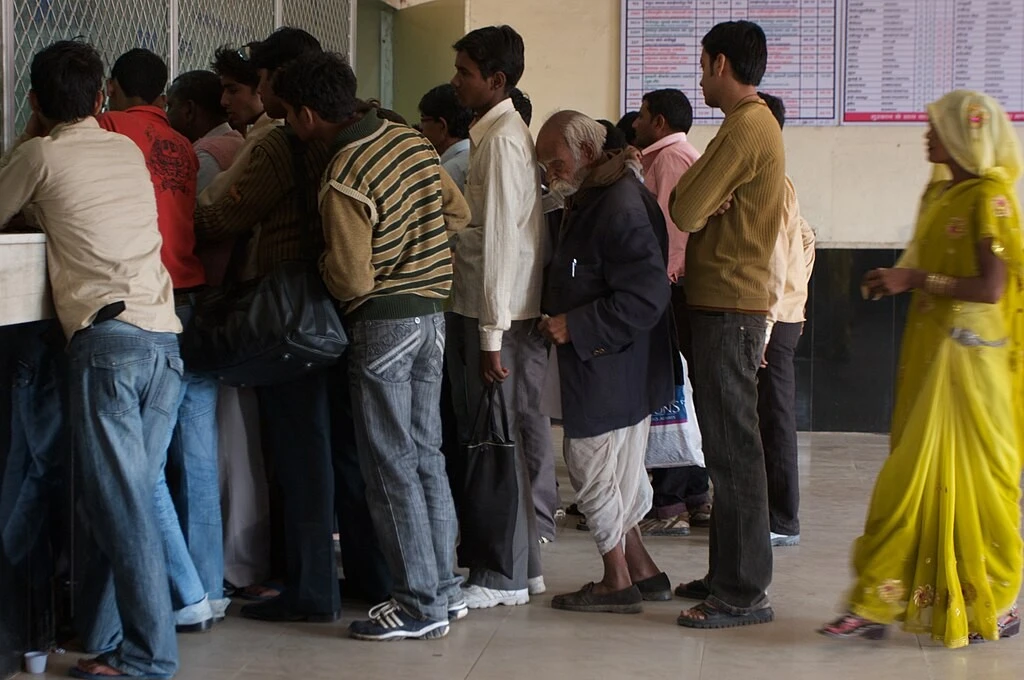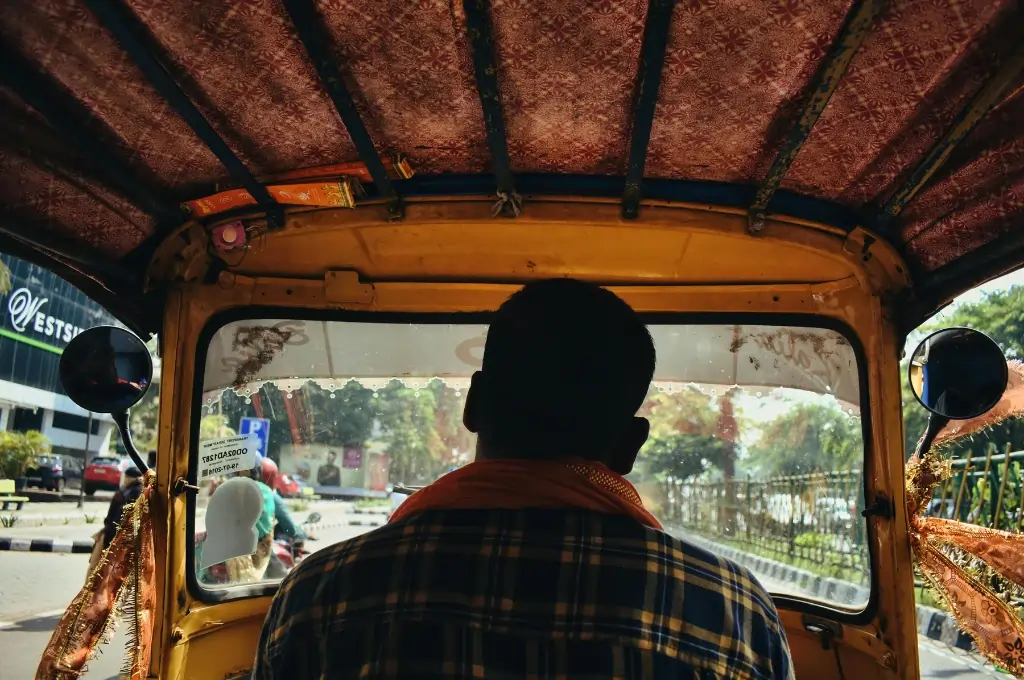Hailing from Rajasthan’s Rajsamand district, Shankar Singh is a social and political activist, musician, lyricist, theatre artist, and storyteller. He co-founded the Mazdoor Kisan Shakti Sangathan (MKSS) alongside prominent activists Aruna Roy and Nikhil Dey. MKSS is known for its role in advocating for and implementing the Right to Information Act (RTI) in the country.
Shankar Singh has employed a variety of creative strategies to champion the rights of marginalised labourers and farmers, focusing on issues such as wages, employment, and other government social entitlements. His approach is marked by a unique blend of entertainment, music, and sharp wit and satire. He has led many successful movements and campaigns, both at the grassroots and national level. Notably, he has contributed to the implementation of landmark schemes like MGNREGA and government processes such as social audits.
In this conversation with IDR, which is the first of two episodes, Shankar Singh delves into the complexities of building a movement, shedding light on how the journey of a movement is charted and the concerted efforts required for it to succeed. He also offers valuable perspectives on identifying grassroots issues and building effective communication channels for collaboration between the government and the people.

Here are some highlights from the conversation:
00:22 | On early life and influences
After finishing school, parents insist that their kids take up some or the other job. I don’t have any brothers or sisters. My father died early on, so my mother became a widow at a very young age. She told me to think about getting a job since she wouldn’t be able to educate me any further. So, I moved to the city.
While doing all these jobs, I ended up at a place where there was a nonprofit organisation nearby. Chance, it was all chance. I asked [the people there], “What is going on here?” and someone responded, “This is an organisation.” “What do they do?” I asked. “This is a nonprofit,” they said. I told them I had never understood what nonprofits do. “They talk about why the condition of the poor is what it is, why there is poverty, how to face it—they talk about that.” I asked about money (salary). They said that people are paid for their work.
“So you get paid for talking?” I asked. Then I said that for money, even I would talk.

As soon as I entered that nonprofit, I felt that there were many types of people there. Some had started working and then left their jobs, and some had MBBS degrees, some had done engineering, some had done a law course. And among them was Aruna, who had left the IAS. I thought, why do they come here, [what do they hope] to achieve by leaving everything? This curiosity gave me many opportunities. The nonprofit took away my fervour of being a teacher, and working there for a year changed my mindset.
08.29 | On the formation of Mazdoor Kisan Shakti Sangathan (MKSS)
[When we started working in Devdungri, people] knew that I was a local from this area, and would call me Shankar mama because my sister-in-law’s house is here. People started asking, “What do you want to do?” You know, when you set out to find out something about people, before that they want to know about you. “Who are you, why are you doing this, what do you get, how much money are you paid, and what’s in it for you?”
Then they thought that we had come here to earn more. People started asking, what they will earn in this house? How? Will they plant mines or do something else? We started talking to them. I said that we want people to think about what they need and how we can help them.
The first person who came to us was [a local named] Lal Singh. Lal Singh ji had come to our place to work as a mason, to do some kitchen repairs. He also asked us what we wanted to do here. We told him that we will do this…even I was not very clear. He said, “We have a big issue [in our village]. We have a jagirdar (feudal landlord)—a thakur—and he is very cruel. He beats whoever he wants and no one can file a complaint against him with the police because he is a jagirdar.”
The villagers kept trying to figure out how to confront that jagirdar, but were beaten up every time. We said that we will talk in your village, and so we got a chance.
It took a year for the village to gradually unite, and that was because of Lal Singh ji. Some families were still in favour of the jagirdar. Some land was collectively allotted to the village. The organisation (MKSS) had not been formed till then.
When we went to measure the land, the thakur attacked us. He attacked the villagers as well. This news reached Sohangadh village and, the following day, at least 50–60 people from there arrived here on foot. They said that they would go and fight [the jagirdar]. We said no and decided to go to the village and have a talk. The next day we held a meeting in the village. That was the first time we had a choice [between violence and non-violence]. We could have taken the path of violence since we had been beaten up. Those villagers could have gone and beaten up the thakur, and there would have been no solution to what would have followed. Each party would be violent to the other and take turns. So we said no, we do not want to take that route. The entire village—children, women, everyone—walked 11 km to Bhim. At that time, just one village was involved in this. We walked through the village telling people about the thakur and ended up outside the office of the tehsil Sub Divisional Magistrate (SDM). We sat there all day long. The thakur was arrested in the evening, and the news spread in the entire area. People started speculating about how much influence ‘these people from Devdungri’ (referring to Aruna, Nikhil, and me) wielded since they got that thakur arrested. “He is a jagirdar, but he was arrested. There is something very special about them.” After that we started working in this area. This incident is from 1987. In 1990, the organisation (MKSS) was set up.
17.02 | On agitating for the Right to Information
When this movement started, what was the first question we asked? We did not say that you (the government) should improve our education system, that you do all these things for us, make our health systems equal. We had asked a question. The people in the villages where we went and held meetings had said that they (government works) do not pay us the full amount. They do not pay full wages. We said to them that this is the question we should be asking the government. I told them thatwe will not go, you all come along, and together we will ask why you aren’t paid the full amount you’re owed.
So when I went to [the government official] and asked him why he does not pay people the full amount, he said that they do not do the full work. [Then the people said,] “But even when we did the full work, you didn’t give full wages.” He said that there must be some other reason for this. I asked, “What is that reason? Show us the documents. Show me that paper in which you noted down how much work someone has done and how much they were paid for it.” [The government official replied,] “How can I show you these documents? They are government documents.”
When he refused to show us the papers, we contemplated what to do next. I suggested, “Hold a protest in front of their place, sit in front of the tehsil, sit in front of the BDO’s office.”
The following day the SDM invited a couple of representatives from the protest. “Those of you who are the main people, come here. I will show you the muster roll because collector sir said so,” he stated. I was very happy that this victory happened on the first day itself. As soon as I went inside, he ‘showed’ us the paper [by quickly opening and closing it]. We said, “Not like this, give us a photocopy of it.” He replied, “How can I give you a photocopy? That is not possible.”
The collector said, “Tell them they won’t be given photocopies. As if we can give just anybody photocopies! There is no law like this. Do one thing: Tell them to copy it by hand. Write it down. But no photocopies.”
We felt that all right, we got one victory. We manually took down the muster roll, and they insisted we use pencils instead of pens.
As soon as we reached the village, we began reading it aloud. The villagers inquired, “What are you reading?” I replied, “This patwar ghar (land records office) was constructed here. These individuals had been employed here.” [The villagers replied,] “But how is his name on it? He died a while back.” “She also had passed away before the construction of this.” “She was not present at the time.”
One of them (a government official) walked over to me, peered over my shoulder at the paper, and said, “Oh, this paper is fake.” I asked, “Why?” [He replied,] “It is written in pencil, you will write anything and bring it, is this a government paper? Government paper is printed, not written in pencil. These people are lying!”
We came to the conclusion that there is no other way. We will have to sit in protest again, so we mobilised people. Leave everything else, we should have the right to see these documents. The slogan was raised: Leke rahenge hum iss baar, soochna ka adhikaar. (This time we will win the right to information.)
We persevered for as long as we could because we wanted to have that law. We did not get tired…it was the government that eventually relented, leading to the implementation of the Right to Information Act.
24.18 | On building and sustaining mass movements
I understood that there isn’t some book where it’s written what you need to do to sustain a movement. When you go among people and actually work, that is when one gets to learn, and one’s own values are determined.
This work is such that it is not possible to do it alone. Hundreds of people have contributed in this. No one can carry any movement alone. I am the one telling you all this, but it was a movement that depended a lot on what people believed, and the methodology was also determined.
In the movement, people came from one place to another, paying their own fare to sit in the protest. In their minds, they realised how important this is. At that time perhaps people might not have thought how the Right to Information [Act] would help them, because at that time they were thinking about wages. Their wages were stuck. As soon as people demanded information, they didn’t receive the information but they received their wages due to the fear that if the information was released, it would lead to bigger revelations.
26.23 | On mobilising for the right to information in a politically charged environment
Today… corruption has reached a level where there is complete complicity in corruption. This includes [government] employees, leaders, and some common people too. There is severe corruption due to the nexus of all three. That corruption will come out only because of your RTI.
Today, the matter is an electronic one—the computer has arrived. Everything is here, but what are you (the government) trying to show? You are showing what you want to show. What you don’t want to show, we all know that you won’t. Suo moto, we say in the RTI Act’s Section 4. Information has to be shown to citizens suo moto. In Rajasthan, there is the Jan Soochna Portal. You can see all the information in that portal. Where is my pension stuck? What is the reason for it being stuck?
In a way, this era of RTI will continue only if there is a movement today. In places where people are fighting and struggling together, they get the information they need and there is no murder. Those who are fighting alone are being murdered. We used it (the RTI) the most in the organisation (MKSS). [We] got public hearings done, got everything done, but they know that this is a group that is fighting for a cause together. It is not that we have never been beaten up or assaulted, but when a group is formed, it has its own strength.
30.45 | On keeping the democratic spirit alive
Look, no matter who wins, this is a democracy; whoever wins, that government is ours. We cannot say that this government is not ours, and we will not talk to it. Because our dialogue will be with whoever is in power. There will be no dialogue with the one who loses. But we will have to have a dialogue with the one who won. This is democracy, if you are sitting on that chair then we will communicate with you. We also raise the same slogans: Sarkaar humare aap ki, nahin kisi ke baap ki (the government is ours, not one person’s property) or Yeh desh hamare aap ka, nahin kisi ke baap ka (this country is ours, not someone’s father’s).
Read the full transcript here, and watch the second part of the Shankar Singh interview where he speaks about the role of music and theatre in driving social movements.
—
Know more
- Watch this TEDx Talk by Shankar Singh to learn more about how the RTI Act came to be.
- Read more about why we need more accountability laws with rising attacks on RTI activists.
- Read about a day in the life of an eMitra who enables citizens to access their rights digitally.





